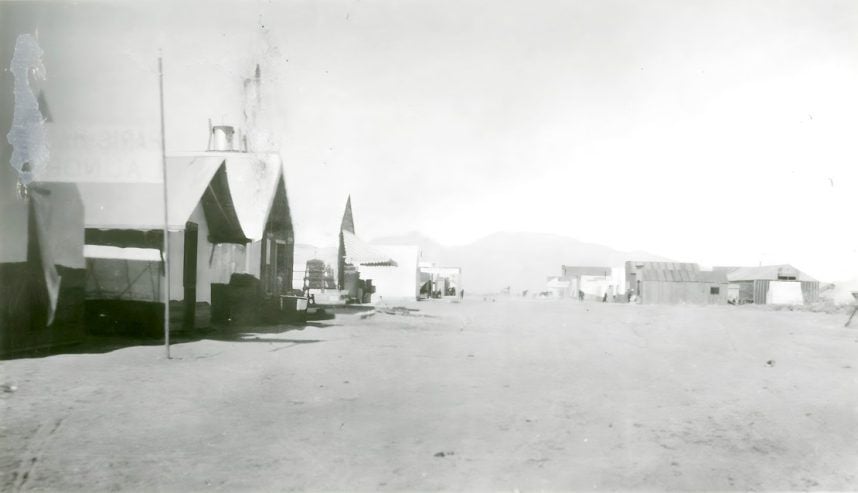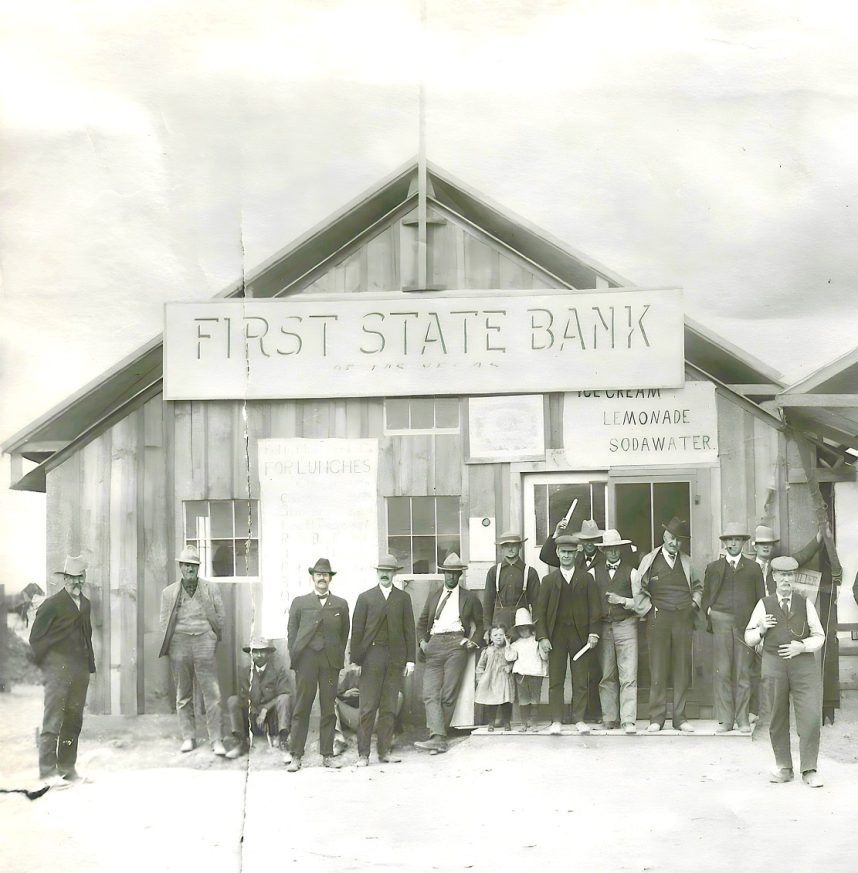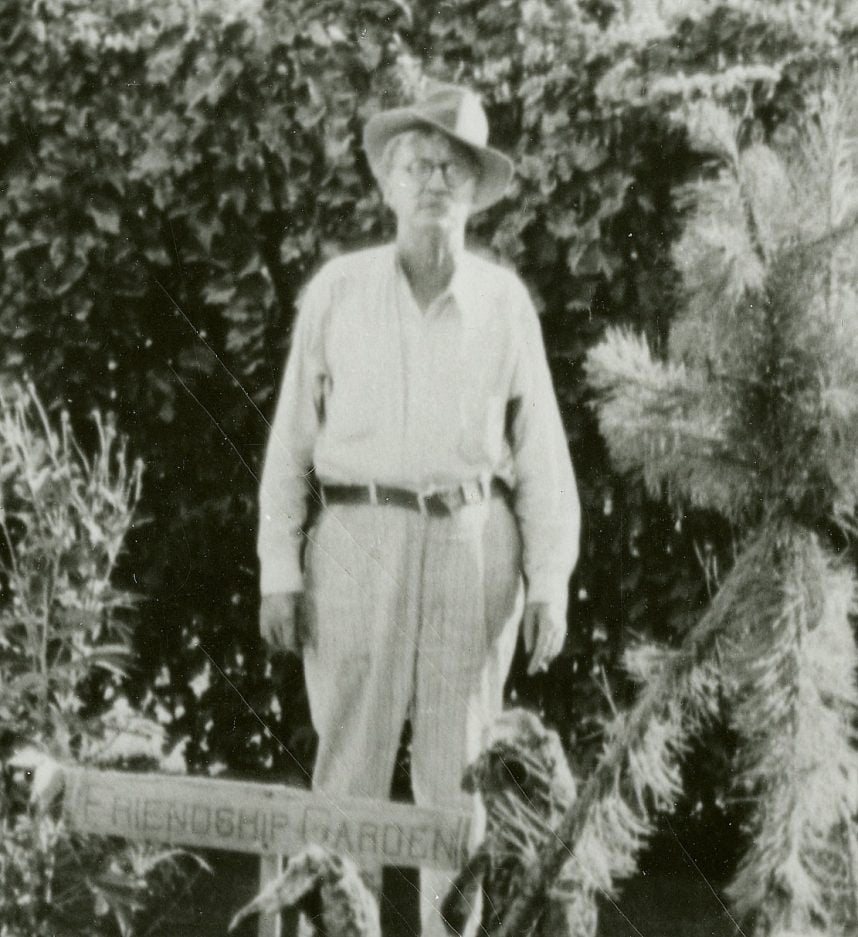Posted on: February 29, 2024, 09:25h.
Last updated on: February 29, 2024, 09:38h.
Las Vegas wasn’t even the first Las Vegas in Las Vegas. An actual, thriving community of 2,000-3,000, also called Las Vegas, was established before the railroad that supposedly built Las Vegas even got there.

J.T. (John Thomas) McWilliams — born in Ontario, Canada in 1863 — was a freelance surveyor hired in 1902 by the San Pedro, Los Angeles & Salt Lake Railroad. His task was surveying a nearly 2K-acre ranch owned by one of Las Vegas’ only residents at the time, Helen J. Stewart.
The railroad was considering purchasing the land to build a town for its new railroad station.
Viva Las Vegas 1.0

Armed with that tidbit of insider info, McWilliams decided to beat the town to town. In 1904, he bought 80 acres of Stewart’s ranch. The land sat just west of the railroad right-of-way. Using his surveying skills, he painstakingly laid out an orderly grid, with broad avenues that eventually became today’s Bonanza Road, Washington Avenue, and A and H streets.
After McWilliams built it, they came — railroad workers and their families. They traveled the Mormon Road wagon route either from Los Angeles or Salt Lake City, the two major cities the railroad was built to connect. Some arrived from the local Pauite tribes.
McWilliams’ Las Vegas had stores, a bank, and was even building its own 800-seat theater. (McWilliams persuaded vaudeville impresario Chuancy Pulsifer to begin construction on the Trocadero in May 1905.) It’s also where McWilliams built his own home, at 222 Wilson St.
The first Las Vegas had all the modern amenities — except for one.
Because McWilliams had never secured the water rights to his township’s land — Stewart sold them to Montana Sen. William A. Clark, owner of the railroad — residents of the first Las Vegas were forced to lug their water from a hodgepodge of wells dug throughout the community.
This was doable, since Las Vegas (Spanish for “the meadows”) teemed with underground springs before they were all sucked up by early developments. But it was a hassle.
So, when Clark began advertising the May 15-16, 1905 land auction that would establish his own Las Vegas across the railroad tracks, one thing that really stuck out to the residents of the O.G. Las Vegas was that his lots all included running water.
“McWilliams got a jump on it, but he didn’t have the water rights, and that’s what destroyed him,” Emmett Gates, a Las Vegas documentary filmmaker, told Casino.org.

Leaving Las Vegas
Over a period of a few weeks, McWilliams’ town emptied out.
“People with businesses placed the buildings on skids and moved them across the tracks to the Clark side,” Gates said.
Once Clark’s Las Vegas became the official one, the original fell into almost immediate decline. A fire in September 1905 consumed most of what was left of the town, including the half-built Trocadero.
McWilliams, who refused to relocate, insisted that the blighted area be called “the original Las Vegas Townsite,” but no one listened. They were already referring to it as “Ragtown.” Eventually, its name became Old Town and the west side.
In the fall of 1941, McWilliams died of a heart attack at 222 Wilson St., which was demolished after his widow died in the late ’60s.
Today, the area is known as the Historic West Side, but not because of any honor paid McWilliams. Its historicity derives from the Black community that built the neighborhood up after getting herded and trapped there, beginning in 1931, due to the openly racist policies of Las Vegas Mayor Ernie Cragin.
And so William Clark got all the glory. He receives virtually all the credit for founding Las Vegas. He even got the county in which the city resides named after him.
And all McWilliams got was forgotten.
“There’s absolutely nothing that remains of the original site,” said Gates, “and historians are the only ones who use the name McWilliams Town Site, because they’re the only ones who remember who McWilliams was.”
Gates’ new documentary about the Black experience in Las Vegas, “Across the Tracks,” screens Wednesday, March 6 at the Galaxy Theatres at the Boulevard Mall.
“Lost Vegas” is an occasional Casino.org series featuring remembrances of Las Vegas’ forgotten history. Click here to read other entries in the series. Think you know a good Vegas story lost to history? Email corey@casino.org.

